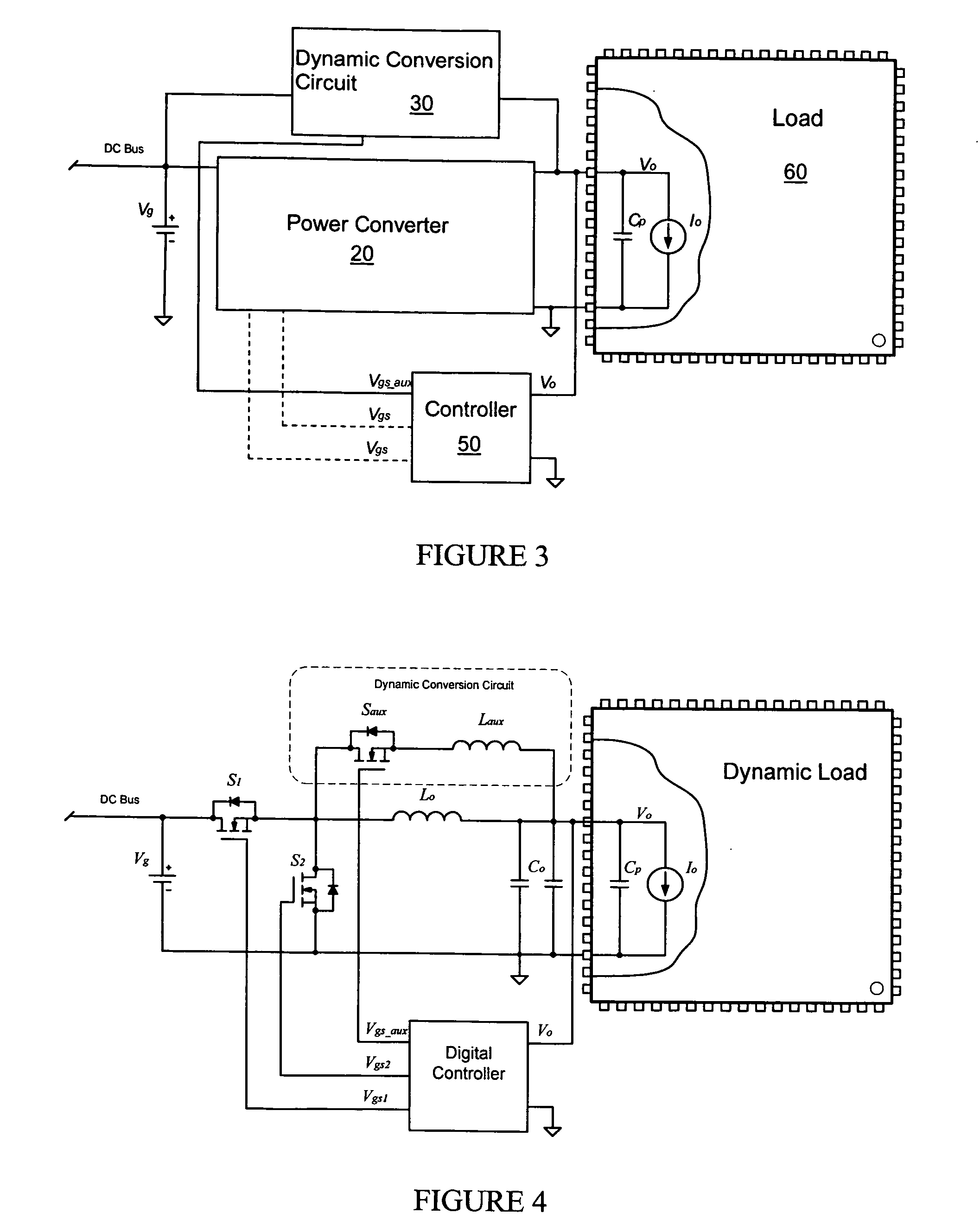However, such designs are not well-suited to the harsher dynamic requirements of next generation microprocessors.
Such filter capacitors are bulky and expensive.
However, the
inductance can not be reduced unbounded, otherwise the output voltage
ripple will increase above acceptable limits (e.g., above 10 mV for next generation microprocessors).
Moreover, even though the
inductance can be reduced for a faster dynamic response, it is not enough to provide adequate response speed for future microprocessors if the output
capacitance is required to be small to reduce cost and to satisfy size and volume constraints.
The more phases are in parallel, the smaller the
ripple will be, but at the expense of increased circuit cost.
However, if the output current can be provided by a
single phase VRM or a VRM with fewer phases, then adopting a multiphase topology or adding extra phases in parallel solely for the purpose of reducing the ripple voltage adds considerable complexity, size, and cost.
More importantly, it is very difficult for a conventionally-controlled multiphase VRM to achieve the dynamic response required by future microprocessors, without having very large output
capacitance.
However, its dynamic performance is not superior to that of voltage
mode control when a large transient occurs.
However, for an output current of 100 A or higher, it would be impractical to use a
resistor to accurately and efficiently sense the current.
On the other hand, a
current transformer is bulky and the sensed current must be averaged, resulting in fuirther increases in the reaction time and drop in the output voltage when a large
load step happens.
However, this small room is far from being enough to
handle the harsh dynamic requirements of the next generation microprocessors.
Moreover, the
voltage droop control method also requires current sensing, which again is not very practical, as discussed above.
However, design of an efficient power converter operating at a
very high frequency is difficult.
Further, the efficiency of a power converter decreases eventually to an unacceptable or unsatisfactory level as its
operating frequency increases.
In general, increasing the
switching frequency of a power converter solely for the purpose of improving the dynamic performance is not an optimum solution.
However, loads such as the next generation CPU will demand a large load current, which would require a
linear regulator to dissipate power excessively during normal
steady state operation.
In addition, partitioning of the CPU into different power zones and an associated interface are required to make linear regulation feasible, because a single
transistor is not capable of delivering a
high current and at the same time effectively dissipating the heat due to the large
power loss.
Wide acceptance of such designs is unlikely, especially when other solutions potentially exist.
Therefore, the
linear regulator is impractical for applications in future microprocessors.
Relative to the basic
buck converter, this design requires significantly more circuit components, which may be difficult and expensive to implement in a multiphase interleaved VRM, because all of the components need to be repeated for each phase.
Therefore, the
voltage response during a load transient is not regulated and may exceed the specified limits of the output voltage during many load conditions.
However, the circuit and the control method are analog based, and, importantly, are not able to regulate the output voltage during the transient.
 Login to View More
Login to View More  Login to View More
Login to View More 


